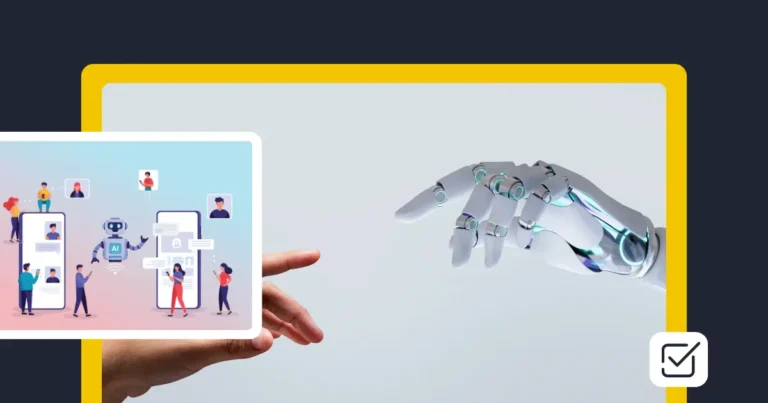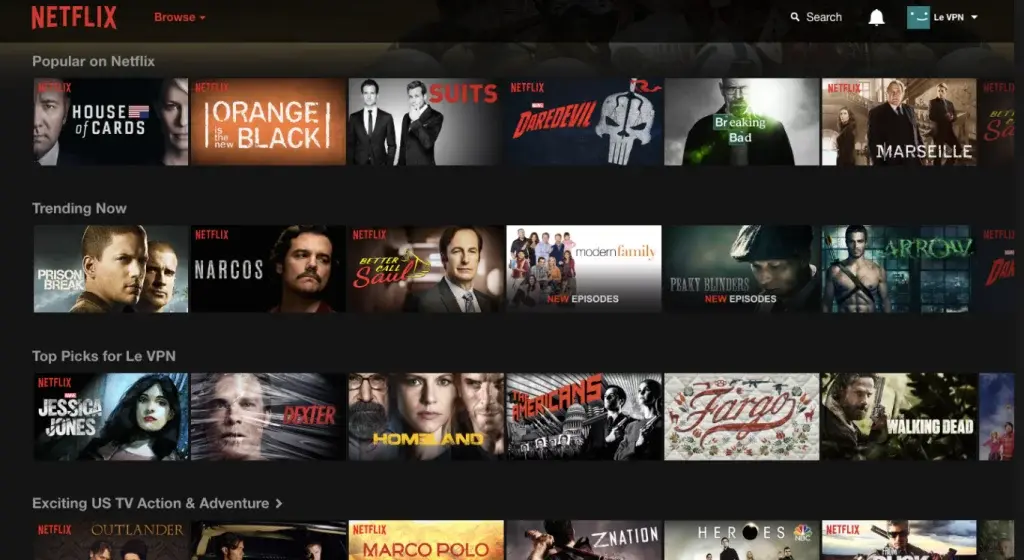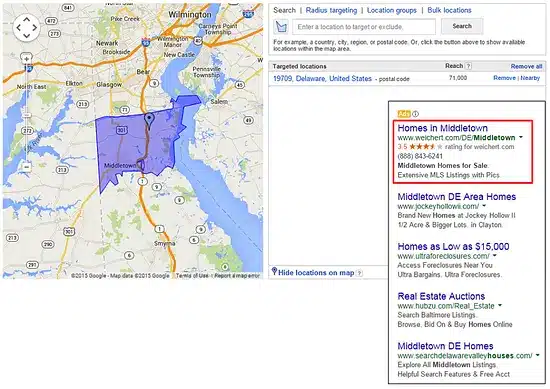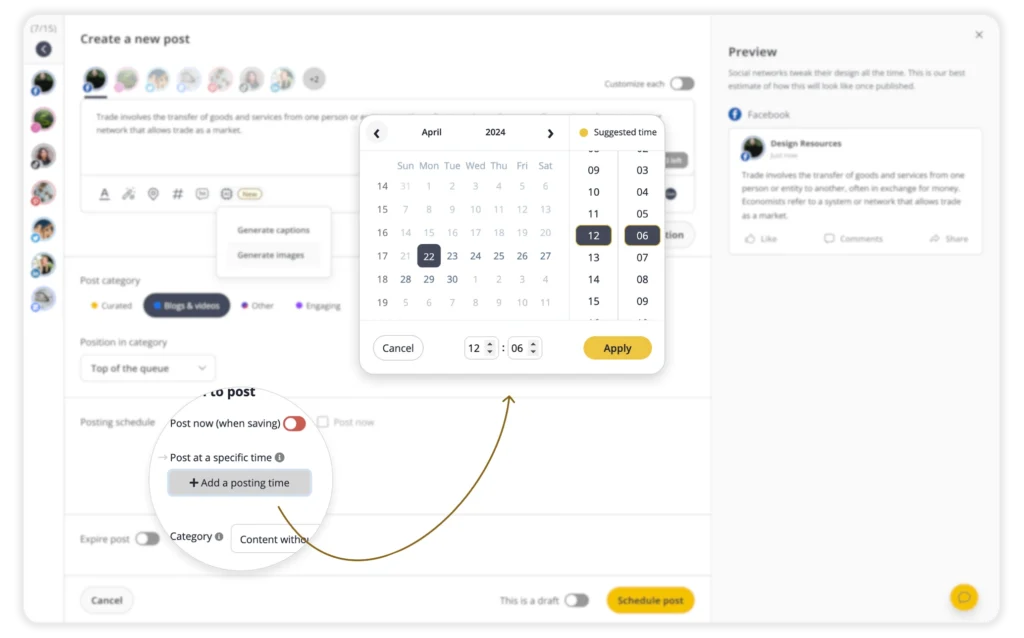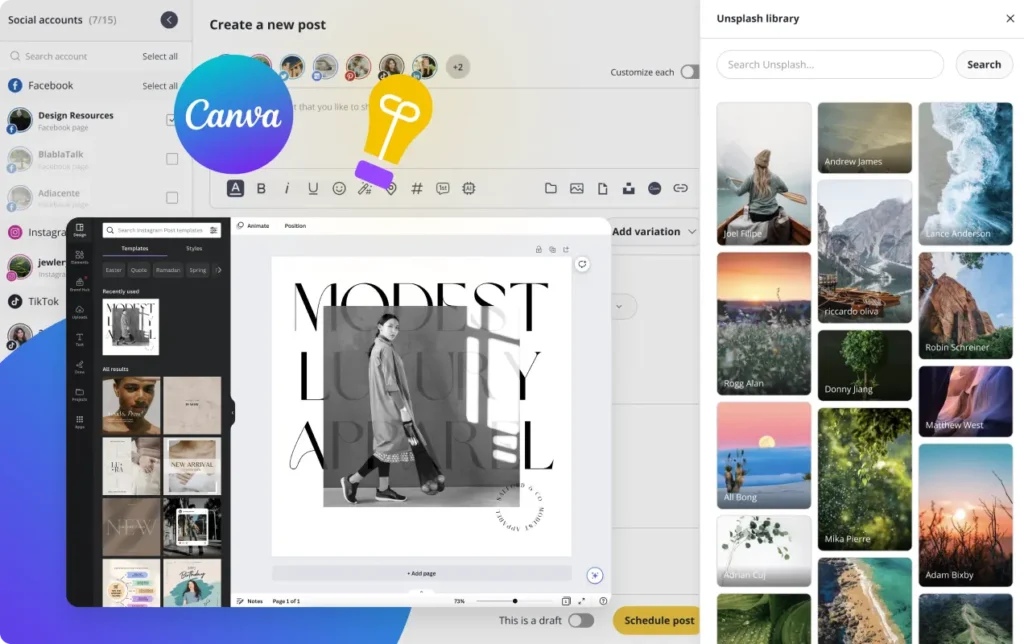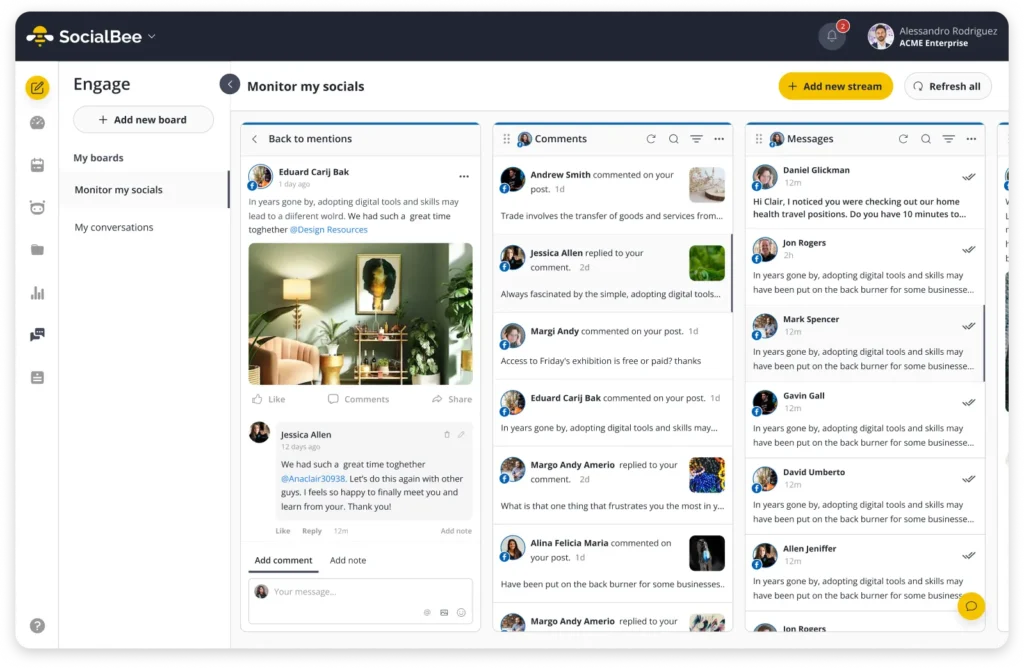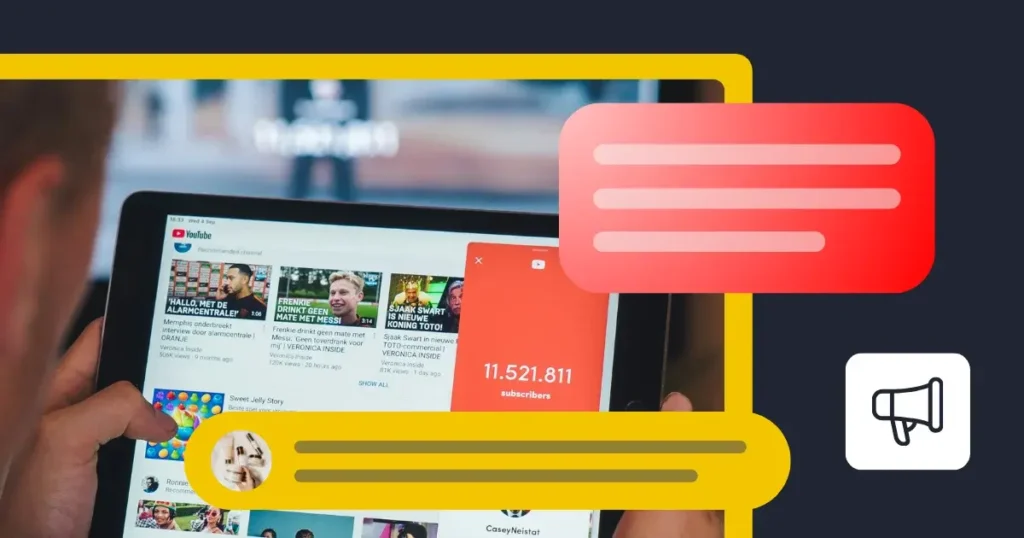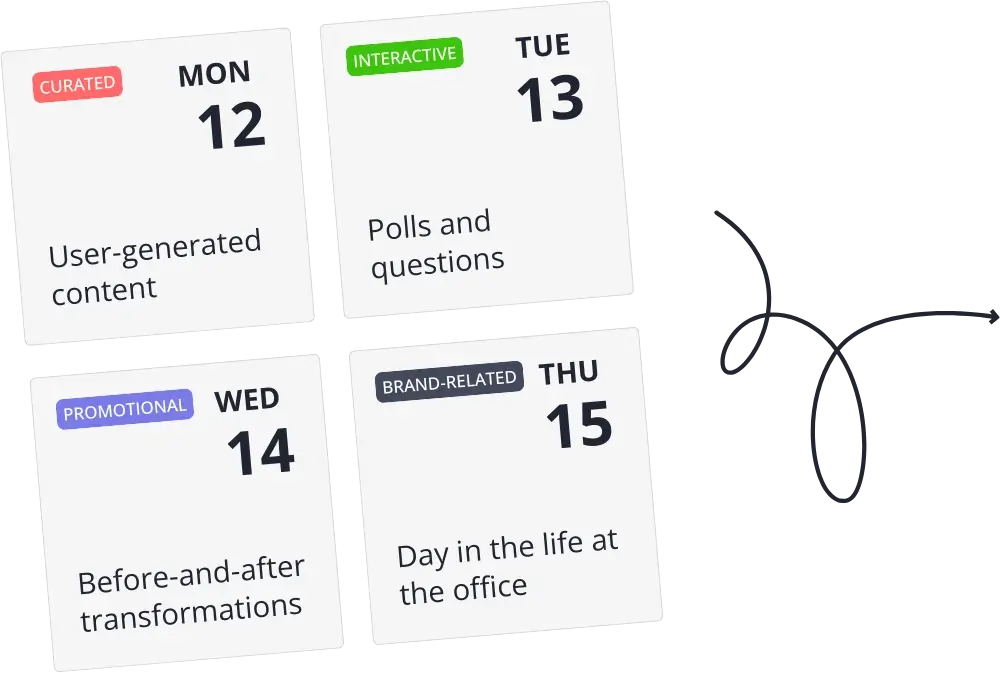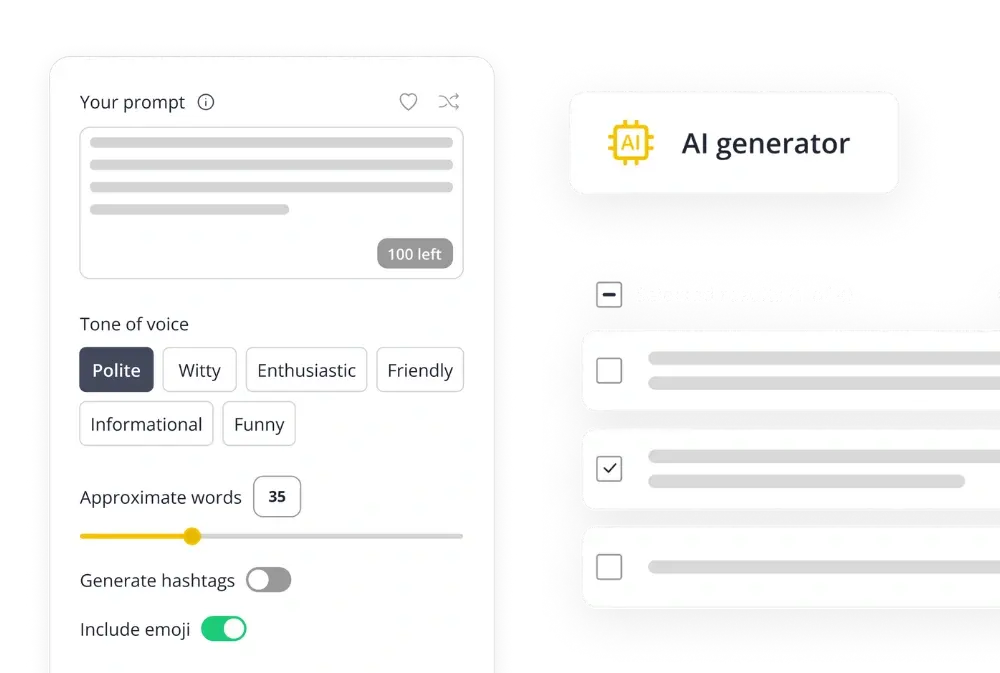
Guest Author
Ever notice how your feed seems to know exactly what you want to see? That’s AI personalization marketing in action, and it’s changing how brands connect with people online.
In this article, we’ll look at how artificial intelligence is helping marketers understand customer behavior, predict what users want next, and deliver personalized content that feels genuinely relevant. We’ll explore how AI tools turn customer data into actionable insights, how brands use real-time data to tailor experiences, and what this shift means for marketing teams, data privacy, and business growth.
By the end, you’ll see why AI-driven personalization isn’t just the future of social media, but what’s defining it right now.
We’re SocialBee LABS SRL, part of WebPros. We use the information you provide to share relevant content and product updates, as outlined in our Privacy Policy. You can opt out anytime.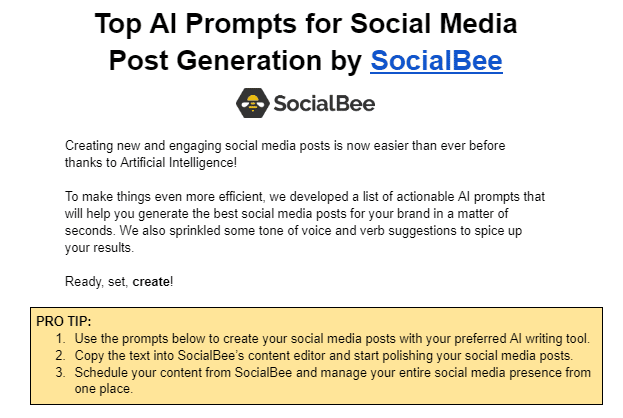
Short summary
- Personalization is helping brands bring a more human touch back to social media: creating content that feels made for each follower, not just everyone at once.
- Understanding what your audience enjoys and when they’re most active helps you share posts that truly land, not just fill the feed.
- Smart tools can handle the heavy lifting: things like scheduling, captions, and insights, so you can focus on creativity and connection.
- When your content feels relevant and well-timed, people notice. It builds trust, engagement, and lasting relationships.
- The sweet spot is balance: use technology to make your job easier, but let real human insight and warmth guide the message.
What is AI personalization and how does it work on social media?
AI personalization marketing uses artificial intelligence and machine learning to create personalized content for individual users based on their digital behavior. Instead of grouping people into broad demographics, AI systems study customer data (everything from likes and comments to browsing history) to understand what truly drives customer engagement.
Here’s how AI personalization works in marketing:
- Brands gather customer data through mobile apps, websites, and social media interactions. This includes real-time data, historical data, and customer feedback.
- AI algorithms identify patterns in how users engage with posts, what formats they enjoy, and which topics spark their interest.
- Based on those insights, AI-driven personalization adapts posts, ads, and even captions to match user preferences in real time.
You don’t need to run massive marketing campaigns to use AI personalization, either. Smaller teams can apply AI tools to detect when their audience is most active and automatically adjust posting schedules for better reach. Others use AI-powered chatbots to respond to customer queries or generate AI captions that fit the tone and timing of each post.
According to a Boston Consulting Group study of over 23,000 consumers, about 80% said they’re more likely to buy from brands that offer personalized customer experiences. And as expectations rise, marketing leaders are realizing that personalization isn’t just for enterprise budgets, but for anyone who wants smarter, more data-driven marketing strategies that connect on a personal level.
Benefits of AI-driven personalization for social media marketers
A 2024 report by Statista found that over 75% of business leaders see personalization as key to their company’s success. And it makes sense, when your marketing efforts are based on customer behavior instead of guesses, everything from engagement to loyalty improves.
Here are 5 benefits of using AI technologies for personalizing social media:
- Stronger audience connection and retention
- Higher engagement and conversion rates
- Efficient content creation
- Better ROI through smarter customer segmentation
1. Stronger audience connection and retention
The best part about AI-driven personalization is that it helps you show up exactly when your audience needs you most. By analyzing consumer data and spotting patterns in customer behavior, brands can tailor messaging and deliver personalized content that fits seamlessly into people’s daily routines.
Take Fit x Mind, for example: a fitness brand that uses predictive analytics to learn when followers are most active. They discovered that engagement spikes on Monday mornings, right when people are planning their workouts. So instead of posting randomly, they schedule motivational transformations and wellness tips at that exact time.
This is what effective personalized marketing looks like. It’s not just guessing or following trends, but using data points and user preferences to send the right message at the right moment. That small change helps improve customer retention, increase post visibility, and create personalized interactions that feel natural, not forced.
Over time, these smarter posting habits help marketing teams better align personalization strategies, build trust, and turn casual followers into loyal fans.
2. Higher engagement and conversion rates
If you’ve ever watched one show on Netflix and instantly got recommendations for five others you’d actually like, that’s AI-driven personalization in action.
Streaming platforms like Netflix rely on predictive analytics and machine learning algorithms to study customer behavior, data points, and user preferences, then suggest the perfect next show based on viewing history.
Marketers can do the same thing on social media. By looking at customer data and customer behavior, you can start to understand what your audience responds to and adjust your marketing strategies accordingly.
Maybe your followers engage most with short videos, or maybe certain topics consistently drive comments and shares. Once you spot those patterns, you can tailor messaging and share personalized content that feels more relevant.
It’s a simple shift that leads to big results. Instead of talking at your audience, you’re creating personalized interactions that speak to them. This not only increases likes and saves but also boosts conversion rates, improves customer retention, and supports long-term business growth.
3. Efficient content creation
Creating fresh content every week can be exhausting, and that’s where AI personalization marketing gives marketing teams a boost. With the help of AI technologies, you can turn data analysis and customer preferences into quick, creative ideas that actually perform.
Think of it as having an assistant who never runs out of inspiration. Need new captions, visuals, or email subject lines? AI-driven tools can generate options in seconds, helping you test what resonates best with your audience. It’s a smarter way to manage marketing tasks, free up time, and keep your feed active without burning out.
Take SocialBee’s AI Instagram Caption Generator, for example. It’s a simple tool that uses machine learning algorithms to suggest personalized messages based on tone, platform, and topic. You can instantly adjust your copy to match user preferences or even A/B test captions to see which one gets more engagement.
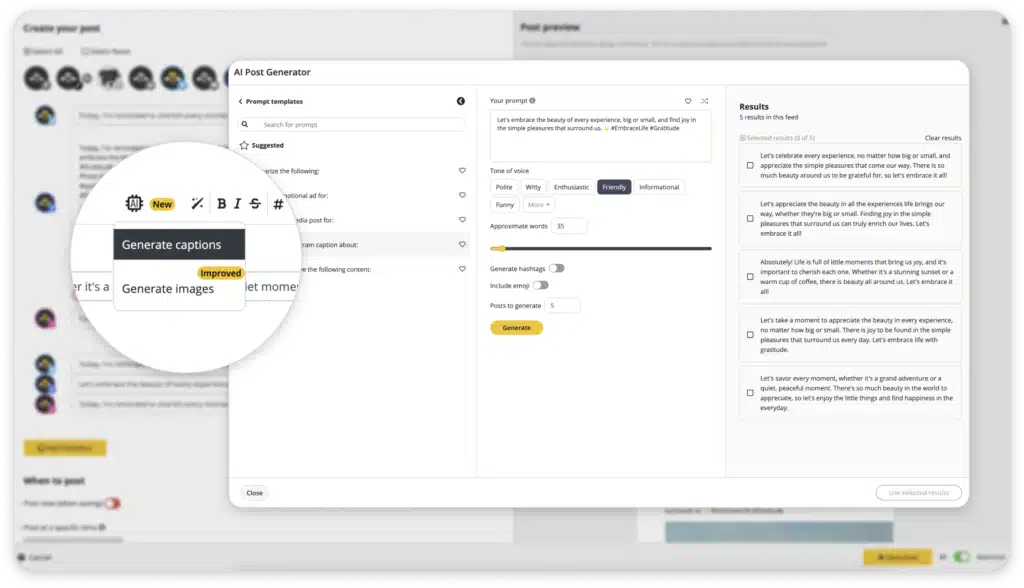
It’s small tools like this that make a big difference. They help marketing leaders and content creators align personalization strategies with real performance data, keep posts consistent, and create customized content that connects, all while saving hours of manual work.
4. Better ROI through smarter customer segmentation
Every audience is made up of different people, and understanding what makes them tick can completely change how your campaigns perform. With better data collection and tools that help you spot consumer buying patterns, marketers can design personalized marketing campaigns that speak to each group’s unique needs and interests.
Take a fashion retailer, for example. By studying customer behavior and user preferences, they might notice that shoppers from colder areas respond best to winter collections, while those in warmer regions prefer lighter outfits.
Using that insight, they can adjust their ads, emails, and social media content automatically, showing the right items to the right people at the right time.
The more you analyze data and understand customer preferences, the easier it becomes to reach individual customers with messages that actually resonate.
This not only improves customer engagement and ad performance but also makes your marketing efforts more efficient, helping you spend less, convert more, and see steady revenue growth over time.
3 use cases of AI social media personalization in 2025
As social media continues to evolve, marketers are using AI personalization marketing to better understand their audiences and improve how businesses interact with customers online.
AI marketing tools help brands:
- Track and analyze customer behavior in real time
- Adapt their marketing efforts to match user preferences
- Create personalized content that drives stronger customer engagement and long-term loyalty
Here are three real-world ways you can start applying AI-driven personalization today:
- Dynamic post scheduling based on user behavior
- Personalized visuals and captions using generative AI
- AI-driven DMs and comment responses for engagement at scale
1. Dynamic post scheduling based on user behavior
Timing matters just as much as the content itself. The best posts don’t just look good, but go live when your audience is actually online and ready to engage. By looking at user behavior and past engagement data, marketers can spot clear patterns in when followers scroll, click, and comment the most.
Once you know those patterns, you can plan your social media posts around them. This makes your marketing efforts more intentional, boosting visibility, engagement, and conversion rates.
For example, let’s say a local coffee shop studies its customer behavior and finds that followers are most active between 10 a.m. and 2 p.m., Monday through Thursday.
Instead of posting at random, the shop starts sharing photos of latte art and running “bring your bestie for a coffee” promos during those peak hours. It’s a simple move that leads to better reach, more comments, and stronger customer engagement.
Social media management tools like SocialBee make this process easy. They analyze your performance data and recommend the best posting times for each platform so your content reaches the right people, exactly when they’re most likely to interact.
Choose the best posting time to share your social media content.
2. Personalized visuals and captions using generative AI
Strong visuals and clever captions are at the heart of every great social post. With generative AI, marketers can now create customized content faster, from images and infographics to on-brand captions that adapt to different tones, locations, or audiences.
Think of how financial brands use this in practice. Instead of relying on generic stock visuals, they now design personalized posts that speak to their audience’s real needs.
A finance company, for example, might create a clean step-by-step guide on how to refinance a private student loan, followed by a data-driven infographic showing the latest consumer buying patterns and debt trends.
When tailoring visuals and captions to user preferences and customer behavior, brands make their content more relevant, and more likely to get shared.
If you want to create this kind of personalized content without juggling a bunch of tools, SocialBee keeps everything in one spot.
You can generate captions and images with AI, then open your Canva designs directly inside SocialBee and import whatever you need. It saves time and makes it easier to turn your ideas into ready-to-publish posts.
SocialBee’s Canva integration.
3. AI-driven DMs and comment responses for engagement at scale
Engaging with followers doesn’t always have to mean sitting online 24/7. With today’s tools, brands can keep the conversation going in real time, answering questions, reacting to mentions, and replying to DMs in a way that feels natural and personal.
Imagine an e-commerce brand getting a question like, “Is this product waterproof?” Instead of leaving it unanswered, an automated reply shares a friendly, helpful response that reflects the brand’s tone. The customer feels heard, gets a quick answer, and the brand strengthens its positioning without lifting a finger.
This kind of personalized interaction is what builds trust and loyalty over time. You’re understanding customer behavior, recognizing what people need, and replying with the right message every time. That consistency keeps customers coming back, boosting satisfaction and even revenue growth.
If you’re managing multiple accounts, SocialBee is a great social media management tool to keep everything organized.
Its Social Inbox lets you view and respond to all your messages, comments, and mentions from one dashboard, no need to jump between platforms. You can track every customer query and make sure nothing slips through the cracks.
Track all your social media interactions from one single place.
AI in marketing challenges to watch out for (and how to overcome them)
A 2024 UK survey asked social media users how they’d react to posts labeled as AI-generated:
- 27% said they’d block or unfollow that account
- 6% would report the post
- Only 5% would actually engage with it
It’s a clear reminder that while automation can make marketing smoother, it can also make it feel less personal if not used carefully. People don’t just want quick responses, they want authenticity and connection.
That’s the real challenge with AI personalization marketing: finding the right balance between technology and the human touch. Marketers need to analyze customer behavior and preferences to create relevant content, but they also have to respect data privacy concerns and keep messaging true to their brand voice.
And that balance often comes from the environment teams work in. A collaborative setting, like a coworking space, naturally encourages creativity, brainstorming, and real human connection. It helps marketing teams use technology more thoughtfully and create personalized content that still feels genuine.
Here are three challenges of AI algorithms in marketing and how to overcome them:
- Over-reliance on automation without human oversight
- Privacy and data concerns
- Maintaining an authentic customer experience while scaling
1. Over-reliance on automation without human oversight
Automation can save time, but it can also backfire. Without human checks, brands risk publishing something off-tone or out of touch. Imagine scheduling a cheerful campaign right when a major crisis hits, that’s a quick way to lose trust.
Tip: Keep a person in the loop. Use automation for speed and performance tracking, but always have someone review your personalized content before it goes live. A quick gut check can make all the difference in maintaining customer engagement and keeping your messaging on point.
2. Privacy and data concerns
Customers are happy to share data if they see value in it, but only if you’re upfront. Unclear or pushy data collection can raise red flags and damage relationships fast.
Tip: Be transparent about what you’re collecting and why. Let people know how their user preferences help you tailor relevant marketing experiences and improve customer satisfaction. Follow privacy laws and make opting out easy. Earning trust through honesty will always outperform complex predictive modeling or fancy dashboards.
3. Maintaining an authentic customer experience while scaling
The more your business grows, the easier it is to lose that personal touch. Relying too heavily on templates or auto-replies can make your brand sound robotic, even if you’re using smart tools to analyze customer behavior or manage social media messages.
Tip: Blend automation with human personality. Use tools to handle the repetitive stuff, like A/B tests, dynamic website content, or scheduling, but have your team jump in to craft the actual messages. Genuine responses build stronger personalized interactions and long-term customer satisfaction.
Frequently asked questions
1. What is the difference between AI personalization and manual targeting?
Manual targeting focuses on fixed audience groups and general assumptions. AI personalization, on the other hand, adapts in real time.
It uses tools like predictive modeling and customer behavior analysis to tailor content to each user, whether that’s suggesting a product, personalizing a caption, or adjusting dynamic website content based on where someone is browsing from.
2. Can small businesses afford AI social media tools?
Definitely. You don’t need a big budget to get started. Tools like SocialBee offer tiered pricing (starting at just $24/month with a free trial) so startups and small businesses can easily access features like image generators, automatic scheduling, and personalized captions without breaking the bank.
3. Is AI personalization ethical when it comes to user data?
Yes, but only if you’re transparent. Always let customers know what data collection is happening, how it’s used, and why.
Clear privacy policies and easy opt-outs build trust while keeping your data privacy concerns in check. Following GDPR and CCPA rules isn’t just compliance, it’s good customer care.
4. Will AI replace human marketers in personalization?
No, and it shouldn’t. AI can help manage repetitive tasks like social media scheduling or segmentation, but it can’t replace human understanding.
People bring empathy, creativity, and cultural awareness, the things that make your personalized interactions feel real. The best results come when AI handles the data and humans handle the connection.
Ready to use AI personalization as a marketing competitive advantage?
At the end of the day, personalization is about connection. It’s about understanding what your audience actually wants to see and showing up in a way that feels genuine, not automated or forced.
With SocialBee, you can plan your posts, write captions that sound like you, and share them when your audience is most likely to be online. It takes care of the scheduling and organization so you can focus on the creative part: talking to people, not just posting for the sake of it.
Everything happens in one place, so you spend less time switching between apps and more time building real engagement.
Start your 14-day free SocialBee trial and see how easy great social media can feel when it’s done your way.
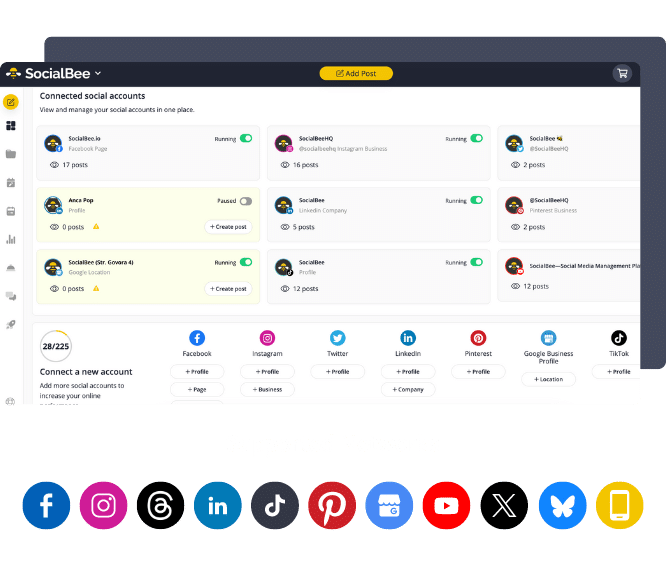
About the author: Kelly Moser is the co-founder and editor at Home & Jet, a digital magazine for the modern era. She’s also the content manager at Login Lockdown, covering the latest trends in tech, business and security. Kelly is an expert in freelance writing and content marketing for SaaS, Fintech, and ecommerce startups.
